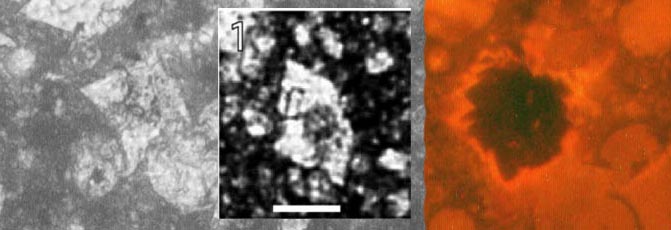Comparison of Transmitted light (TL) and Cathode
Luminescense (CL) microscopy.
images of the lower Paleocene interval above 794.11m, (not contested).
Happily together occur numerous (real!) foraminifers and scattered dolomite
crystals that display the same zoned overgrowth as the
crystals in the transitional interval 794.11-794.60m.

